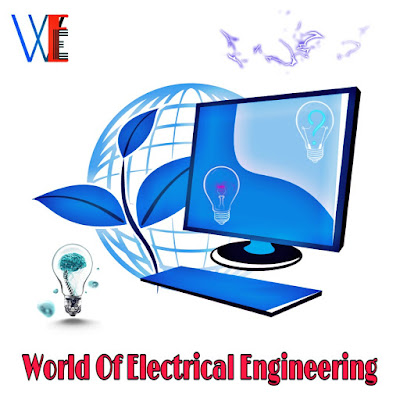What is Computer? | Characteristics of Computer | Limitations of computer | Types of Computer
Definition
A computer is a machine that processes data according to set of instructions stored within
the machine.
the machine.
 |
| What is Computer? | Characteristics of Computer | Limitations of computer | Types of Computer |
It receives data as input, processes the data, such that performs arithmetic and logical operations on the same and produces output in the desired form on output device as per the
instructions coded in the program.
instructions coded in the program.
The processing function of the computer is directed by the stored program, a set of codes instructions stored in the memory unit, which guides the sequence of steps to be followed during processing.
Characteristics Of Computer
The following are the characteristics which make a computer an indispensable unit:
✓ Speed
✓ Consistency
✓ Accuracy
✓ Flexibility
✓ Reliability
✓ Large storage capacity
✓ Automatic operation
✓ Diligent
✓ No emotional ego and psychological problems.
Limitations of a computer:
A computer entails the following limitations which is mentioned below:
✓ It does not work on itself, a set of instructions is required for its operation.
✓ It cannot take decision on its own, it has to be programmed as per requirements.
✓ It is not intelligent,it has to be instructed in detail for the performance of each and
every task.
every task.
✓ It cannot learn by experience, as human beings do.
Classification Of Computer
The computers may be classified as follows:
1. On the basis of the type of date:
(i) Analog computers
✓ These computers process the data in analog form.
(ii) Digital computers
✓ These computers process the data in digital form.
2. On the basis of the size and capacity:
(i) Micro computers
(ii) Mini computers
(iii) Main frame
(iv) Super computers
3. On the basis of the type of application:
(i) Special purpose computers
(ii) General purpose computers
4. On the basis of the number of users:
(i)Single user computers
(ii)Multi-user computers
5. On the basis of the number of processors:
(i)Single processor computers
(il)Multiprocessor computers
6. On the basis of the type of instructions set:
(i)Complex Instruction Set Computers(CISC)
(ii)Reduced Instruction Set Computers(RISC)
Analog Computers
The principle of operation of analog computers is to create a physical analog of mathematical problems.
Measure physical variables continuously. Use signals as input(which may be supplied by devices like barometers, speedometers, thermometers etc.
The result given by an analog computer is not very precise, accurate and consistent.
These computers find limited applications.
Example:
✓ Specdometer of a vehicle, here speed varies continuously.
Digital Computers
The digital computers accept digits and alphabets as input.
Receive data in the form of discrete signals representing ON(high) or OFF(low) voltage.
The data input can be represented as sets of 0's and 1's representing low and high respectively.
The digital computers convert data into discrete form before operating on it.
The most important characteristic of a digital computer is that it is general purpose device capable of being used in a number of different applications.
By changing the stored program, the same machine can be used to implement totally different tasks.
Example:
✓ Digital watches.
Digital computers may be further classified based upon:
(1) Purpose of use
Such that, General purpose and special purpose
(2) Size and capabilities
On the basis of size and capabilities,the digital computers are classified as:
1. Super computers
2. Mainframe computers
3. Medium sized computers
4. Mini computers
5. Micro computers
1. Super computers:
These computers are the fastest speed of calculations upto 1.2 billion instructions per
second and have very high processing spceds.
They are very large in size and most powerful and costliest.
second and have very high processing spceds.
They are very large in size and most powerful and costliest.
Their fields of applications include processing weather data, geological data, genetic
engineering etc.
engineering etc.
Word length: 64 bits and more
These computers can receive input from more than 1000 individual work stations.
Example:
PARAM(a super computer developed in India).
2. Main frame computers:
These are large scale gcneral purpose computer systems.
Possess large storage capacities in several million words.
Secondary storage directly accessible of the order of several billion words.
Can support a large number of terminals upto 100 or more.
Faster in operation 100 million instructions/sec.approx.
Accept all types of high level languages.
Word length-16 or 32 or 64 bits.
3. Medium sized computers:
Mini versions of mainframe computers.
They have smaller power than mainframes.
Processing speeds relatively high with support for about 200 remote systems.
4. Mini-computers
These are general purpose computer systems.
Reduced storage capacity and performance as compared to main frame.
Reduced storage capacity and performance as compared to main frame.
✓ CPU speed-few million instructions/sec.
✓ Word length-16 or 32 bits.
✓ Can accept all types of high level languages.
✓ Can support upto about 20 terminals.
In view of fast development in electronics it is difficult to draw a line of demarcation between small main frame computers and large mini-computers.
5. Micro-computers:
These are small sizer computers utilising micro-processors.
These are popularly known as personal computer(P.C.). CPU is usually contained on one chip.
Possess low storage capacity, maximum being 256 K words. Slow in operation - 105 instructions/sec.
Usually provided with video display unit, floppy drive and printer.
Some micro-computers can support hard disc also.Maximum word length is 16 bits; however most of these use 8-bit words.
Commonly used language-BASIC. However these computers can also accept other high level languages such that PASCAL, FORTRAN etc.

Comments
Post a Comment